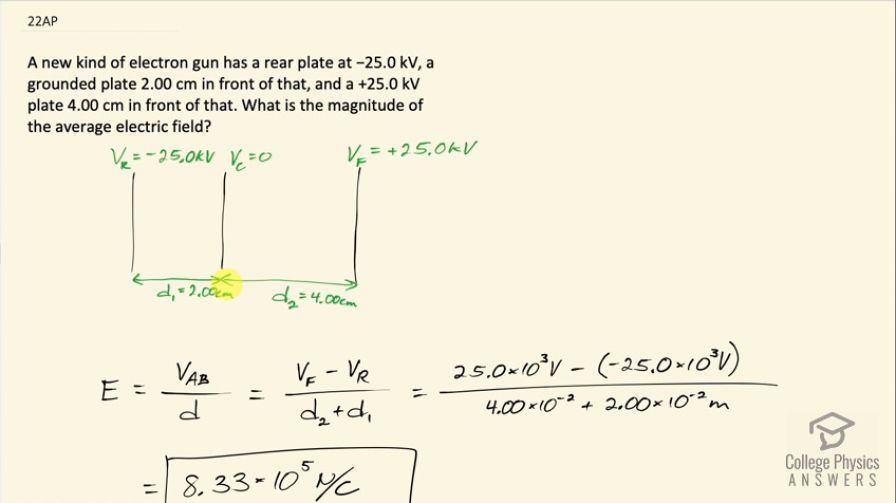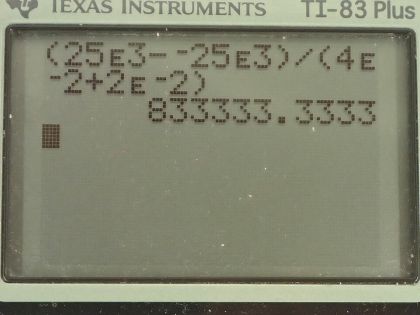Question
A new kind of electron gun has a rear plate at −25.0 kV, a grounded plate 2.00 cm in front of that, and a +25.0 kV plate 4.00 cm in front of that. What is the magnitude of the average electric field?
Final Answer
Solution video
OpenStax College Physics for AP® Courses, Chapter 19, Problem 22 (Test Prep for AP® Courses)

vote with a rating of
votes with an average rating of
.
Calculator Screenshots
Video Transcript
This is College Physics Answers with Shaun Dychko. An electron gun has a rear plate at a potential of negative 25.0 kilovolts, a center plate with a potential of zero— that's what grounded means— and a front plate at a potential of positive 25.0 kilovolts and this front plate is 4.00 centimeters in front of the grounded plate and the rear plate is 2.00 centimeters behind the grounded plate... the center plate, what is the magnitude of the average electric field is the question? Well when you see the word 'average,' often you think of taking, you know, one thing and then adding it by another thing and then dividing by the number of things and then getting your average and there is a way to do that for this question but the electric fields in each region here—so this is the first region and then the second region— those electric fields would have to be weighted by the fraction of the total distance that that electric field applies and I will talk more about that at the very end just because I have a feeling that students are thinking about the question in this way. So but before we get into that, let's look at this alternative approach which is to find the electric field that is just between the front and the rear plate and ignore this center plate completely. So the electric field between parallel plate capacitor is the potential difference between the final and initial position— points A and B— divided by the total distance between those final and initial points. So the final point here is the front plate and then subtract from that the potential of the rear plate and divide by the total distance between them, which is d 1 plus d 2. So that's 25.0 times 10 to the 3 volts minus negative 25.0 times 10 to the 3 volts divided by 4.00 centimeters plus 2.00 centimeters, this works out to 8.33 times 10 to the 5 newtons per coulomb. Now if you wanted to take an electric field here and... (I guess it's pointing the other way isn't it) electric field here, let's call that E 1 and then we have another electric field here E 2 and calculate these separately... E 1 being just V R divided by d 1 and then E 2 being V front divided by d 2 and then take the average of these, you'd have to go E 1 multiplied by d 1 divided by d 1 plus d 2 and this is the fraction of the distance over which E 1 exists so it exists as a fraction of 2.00 divided by 6.00 and then add to that E 2 times d 2 over d 1 plus d 2 and this will give you the same answer as I have here.
